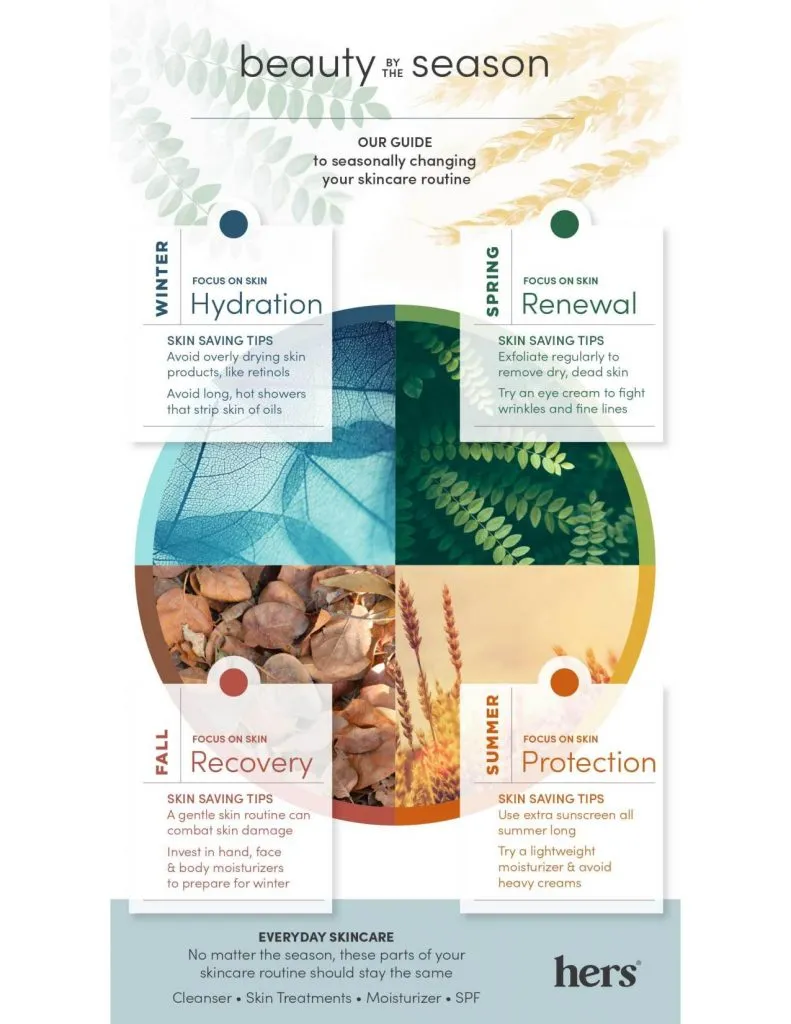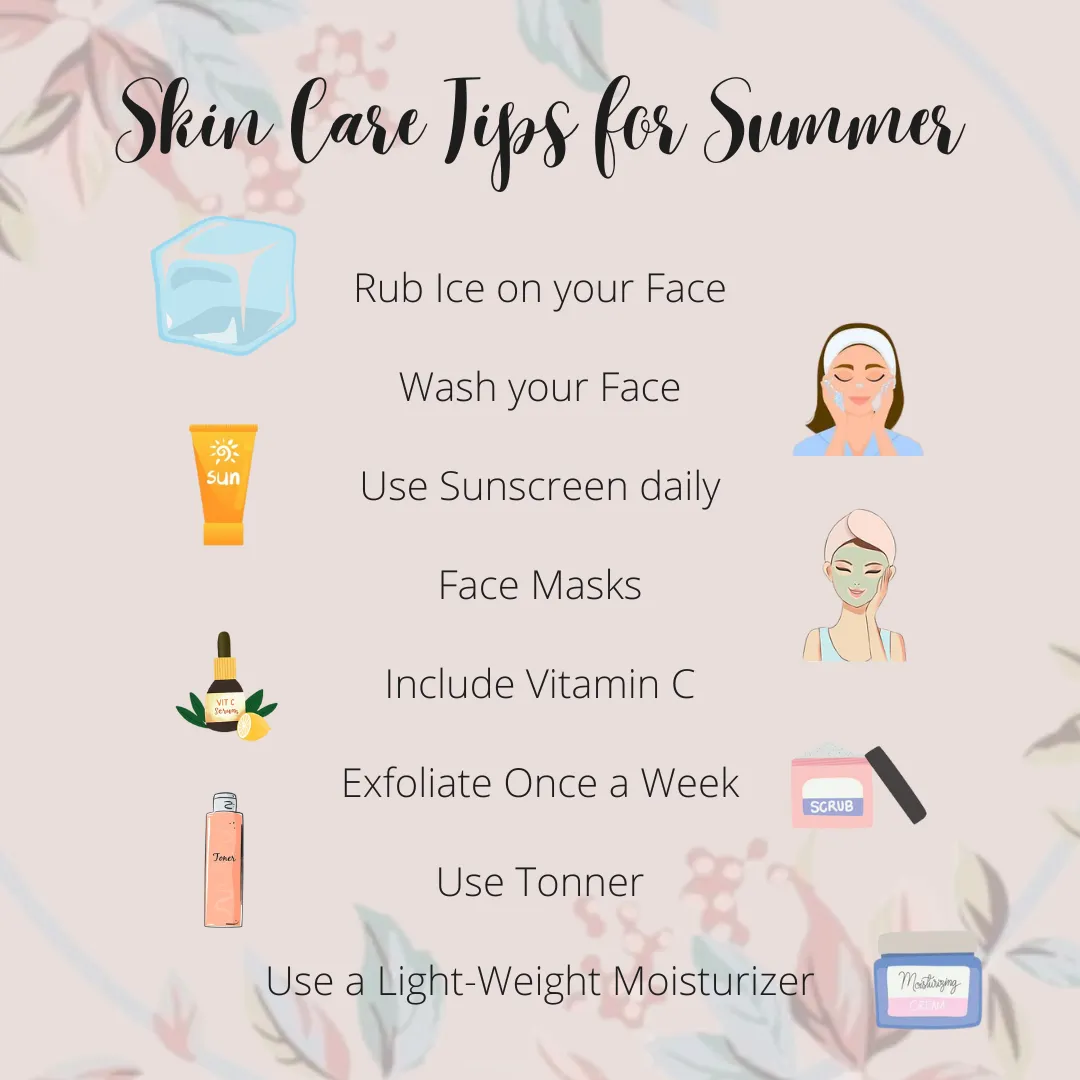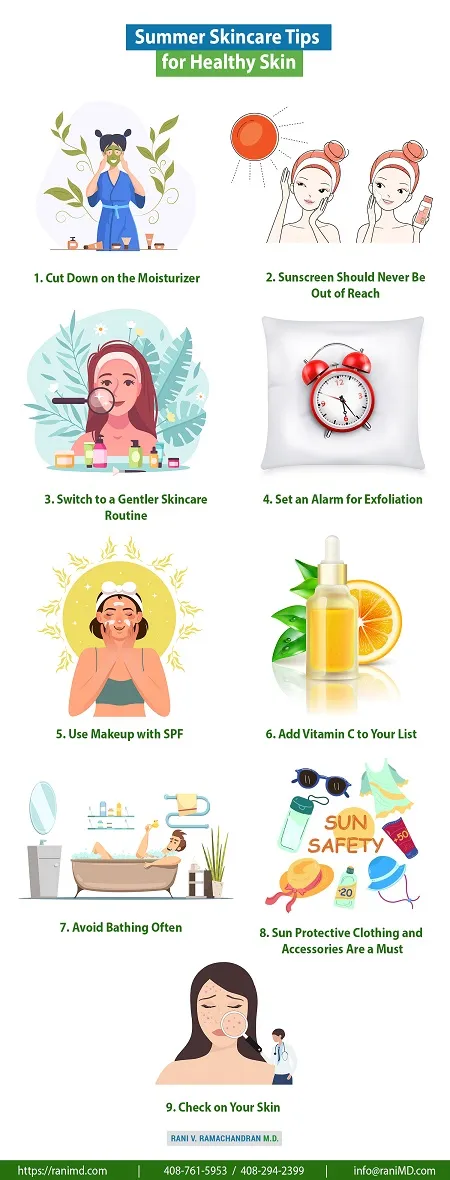Summer is the season of sunshine and outdoor fun, but it also presents unique challenges for maintaining bright and even-toned skin. The increased sun exposure can lead to tanning, pigmentation, and uneven skin tone, making it crucial to adopt a strategic approach to skin whitening during this time. This guide provides five essential tips to help you achieve and maintain a brighter complexion throughout the summer months. By incorporating these practices into your daily routine, you can enjoy the summer while keeping your skin looking its best.
Summer Skin Whitening [5 Top Tips]
Tip 1 Protect from Sun Exposure
Sun protection is the cornerstone of any effective skin whitening strategy. UV rays stimulate melanin production, which leads to tanning and can worsen existing pigmentation issues. Protecting your skin from the sun is essential for preventing further darkening and allowing your skin-whitening efforts to be effective. This involves several key steps, including understanding how the sun affects your skin and implementing robust protective measures.
Understanding Sun’s Impact on Skin

The sun emits two types of harmful ultraviolet (UV) rays UVA and UVB. UVB rays are the primary cause of sunburn, while UVA rays penetrate deeper into the skin and contribute to premature aging and pigmentation. Both types of rays can trigger melanin production, leading to tanning, age spots, and uneven skin tone. Prolonged sun exposure without protection can exacerbate these issues, making skin whitening more challenging. Understanding these effects is crucial for adopting effective preventative measures.
Use Broad-Spectrum Sunscreen
Apply a broad-spectrum sunscreen with an SPF of 30 or higher every day, regardless of whether it’s sunny or cloudy. Reapply every two hours, especially if you’re swimming or sweating. Choose sunscreens that protect against both UVA and UVB rays. Look for ingredients like zinc oxide and titanium dioxide, which provide a physical barrier against the sun’s rays. Make sunscreen application a non-negotiable part of your morning routine to shield your skin from the sun’s harmful effects and support your skin-whitening goals. (See image: sunscreen-application.webp)
Wear Protective Clothing
In addition to sunscreen, wearing protective clothing can significantly reduce sun exposure. Opt for lightweight, long-sleeved shirts, pants, and wide-brimmed hats. Sunglasses that block UV rays are also essential for protecting the delicate skin around your eyes. Consider incorporating UPF (Ultraviolet Protection Factor) clothing into your wardrobe, which is specifically designed to block harmful UV rays. These additional layers of protection can provide an extra level of defense against the sun and assist in maintaining your brighter complexion. (See image: protective-clothing.webp)
Tip 2 Exfoliate Regularly

Exfoliation is a key step in promoting skin whitening by removing dead skin cells, which can make your skin look dull and uneven. By sloughing off these dead cells, you reveal the brighter, fresher skin underneath and allow skin-whitening products to penetrate more effectively. There are several methods of exfoliation available, each with its own set of benefits and considerations. It is crucial to understand these options and incorporate safe practices into your skincare regimen.
Benefits of Exfoliation for Whitening
Exfoliation offers several benefits for skin whitening. It removes the top layer of dead skin cells, which often contain accumulated melanin, the pigment responsible for skin darkening. This process helps to even out skin tone and reduce the appearance of dark spots and blemishes. Furthermore, regular exfoliation promotes cell turnover, stimulating the production of new skin cells, leading to a brighter, more radiant complexion. Enhanced product absorption is another benefit, allowing your skin-whitening products to work more effectively. (See image: exfoliation-techniques.webp)
Types of Exfoliants
There are two main types of exfoliants: physical and chemical. Physical exfoliants include scrubs and exfoliating tools, which manually remove dead skin cells. Chemical exfoliants use acids like AHAs (alpha hydroxy acids) and BHAs (beta hydroxy acids) to dissolve the bonds between skin cells. Both types can be effective, but it is important to choose the right type based on your skin type and sensitivity. Physical exfoliants can be more abrasive, while chemical exfoliants offer a deeper exfoliation and can be beneficial for various skin concerns.
How to Exfoliate Safely

Exfoliate one to three times per week, depending on your skin type and the exfoliant used. Start with a less frequent schedule and gradually increase as needed. When using physical exfoliants, use gentle circular motions and avoid excessive scrubbing. When using chemical exfoliants, follow the product instructions carefully. Always apply sunscreen after exfoliating, as your skin will be more sensitive to the sun. If you experience any irritation, reduce the frequency of exfoliation or consult with a dermatologist.
Tip 3 Use Whitening Products
Skin whitening products can be a valuable addition to your skincare routine, but it’s crucial to choose products that are safe and effective. These products often contain ingredients that inhibit melanin production or promote cell turnover. Understanding the different types of whitening products and knowing how to choose the right ones can help you achieve the desired results while minimizing potential risks.
Ingredients to Look For
Look for products containing ingredients like vitamin C, niacinamide, kojic acid, arbutin, and hydroquinone (used under the guidance of a dermatologist). Vitamin C is an antioxidant that brightens the skin and protects against environmental damage. Niacinamide reduces inflammation and improves skin tone. Kojic acid, arbutin, and hydroquinone inhibit melanin production, reducing dark spots. Always read product labels carefully, and consider doing a patch test before applying a new product to your entire face to check for any adverse reactions. (See image: whitening-product-ingredients.webp)
Types of Whitening Products

Skin whitening products come in various forms, including creams, serums, lotions, and masks. Serums typically have a higher concentration of active ingredients, while creams and lotions provide hydration. Masks can offer an intense treatment for a specific period. The best choice depends on your skin type and the specific concerns you are addressing. Consider incorporating a combination of products for comprehensive skincare, such as using a serum in the morning and a cream at night.
How to Choose the Right Products
Choose products that are suitable for your skin type and address your specific concerns. If you have sensitive skin, opt for gentler formulations with lower concentrations of active ingredients. For dry skin, choose products with hydrating ingredients. Always consult with a dermatologist before starting a new skincare regimen, especially if you have existing skin conditions. Start with one product at a time to assess how your skin reacts and introduce additional products gradually to minimize potential irritation. Be patient and consistent, as it may take several weeks or months to see noticeable results.
Tip 4 Maintain a Healthy Diet
A healthy diet plays a vital role in overall skin health, including skin whitening. What you eat can significantly impact your skin tone, clarity, and overall radiance. Eating the right foods can provide essential nutrients and antioxidants, helping to brighten your complexion and protect your skin from damage. It’s equally important to be aware of foods that may have a negative impact on skin health and avoid them whenever possible.
Foods that Promote Skin Whitening

Incorporate foods rich in antioxidants, vitamins, and minerals into your diet. Vitamin C-rich foods, such as citrus fruits, berries, and bell peppers, help to brighten the skin and protect against sun damage. Foods high in vitamin E, like nuts and seeds, support skin health and repair. Include leafy green vegetables, which provide essential nutrients. Hydrating fruits and vegetables, like watermelon and cucumbers, help maintain skin hydration. (See image: healthy-diet-for-skin.webp)
Foods to Avoid
Limit your intake of processed foods, sugary drinks, and excessive amounts of unhealthy fats. These foods can contribute to inflammation and negatively impact skin health. Excessive sugar intake can lead to glycation, a process that damages collagen and elastin, leading to premature aging. High-fat foods can contribute to clogged pores and breakouts. Make conscious choices to reduce these foods in your diet to support clearer, brighter skin.
Importance of Hydration
Drink plenty of water throughout the day to keep your skin hydrated. Hydrated skin appears plumper and more radiant, and it helps to flush out toxins that can contribute to dullness. Aim for at least eight glasses of water per day, and increase your intake during hot weather or after exercise. You can also consume hydrating fruits and vegetables, such as watermelon and cucumbers, to supplement your water intake. Staying hydrated is crucial for maintaining healthy, glowing skin. (See image: hydrated-skin.webp)
Tip 5 Adopt a Consistent Skincare Routine

Consistency is key to achieving and maintaining brighter skin. Establishing a regular skincare routine that you follow consistently, both in the morning and at night, is crucial for maximizing the benefits of your skin whitening efforts. This means sticking to a set of steps, including cleansing, toning, treating, and moisturizing, every day. A consistent routine will not only support skin whitening but also enhance the overall health and appearance of your skin.
Daily Skincare Regimen
Your morning skincare routine should focus on protecting your skin from sun and environmental damage. Start with a gentle cleanser to remove impurities, follow with a serum containing antioxidants like vitamin C, and then apply a moisturizer to hydrate and protect your skin. The most important step in your morning routine is to apply a broad-spectrum sunscreen with an SPF of 30 or higher. (See image: skincare-routine-summer.webp)
Nighttime Skincare Routine
Your nighttime routine should focus on repairing and rejuvenating your skin while you sleep. Begin with a gentle cleanser to remove makeup, dirt, and oil. Follow with a treatment serum containing ingredients like retinoids or AHAs/BHAs to promote cell turnover and address specific skin concerns. Apply a rich moisturizer to hydrate your skin and lock in the benefits of the serum. Incorporating these steps into your nightly routine will support skin whitening and enhance your skin’s overall health.
By following these five tips – protecting your skin from sun exposure, exfoliating regularly, using skin whitening products, maintaining a healthy diet, and adopting a consistent skincare routine – you can significantly improve your skin’s brightness and achieve a more even skin tone throughout the summer. Remember that consistency and patience are key. It may take time to see noticeable results, but with dedication, you can enjoy a radiant, glowing complexion all summer long.
